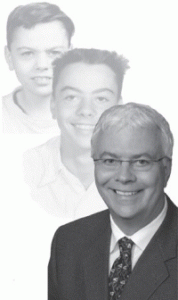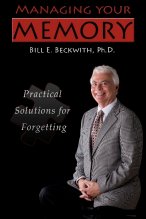The Age of Alzheimer’s
An opinion presented in the New York Times by Sandra Day O’Connor, Stanley Prusiner, and Ken Dychtwald (October 28, 2010) presents a plan on “How to resist the coming wave of fatal dementia.” They present sobering facts to make their case. Alzheimer’s is 100% incurable and 100% fatal (100% of us will die but most will not die with Alzheimer’s). There are 5 million cases of Alzheimer’s in the United States today and there will be an estimated 13.5 million cases by 2050. They remind us of the rush of baby boomers that start on January 1st. Further, they state that we cannot avoid Alzheimer’s by medical checkups, exercise, being social, or engaging in stimulating mental activities. Finally, they bemoan the lack of medications that are presently helpful and the limits of the effectiveness of the medications to reverse the degenerative changes.
They propose the solution is to set a national agenda of “stopping Alzheimer’s by 2020” and compare the process to the race in the 60s to be the first country to land a man on the moon by the end of the decade. They hope to change Alzheimer’s to a “former diseases like typhoid, polio, and childhood cancer.” All of this begs the question of whether we can eradicate a medical disorder by force of will and money. I was at a conference in 1990 where researchers promised a cure for Alzheimer’s by 2000. Finding an effective cure for Alzheimer’s disease is a much more complex problem than landing a rocket on the moon. If we don’t know the cause of Alzheimer’s, how can we realistically set a time table for drug development?
I propose that we spend more resources on treatments that help now. Alzheimer’s disease starts decades before we can detect it by current medical tests. The best model for developing a treatment strategy may be diabetes. Those at risk of diabetes don’t wait for a diagnosis to start education and treatment. Like Alzheimer’s the onset of diabetes is slow and progressive. Like Alzheimer’s there is no cure for diabetes. Like diabetes we need to be proactive and work with changes in life style and education to better manage the course of Alzheimer’s disease. We need to research and develop strategies for early interventions when the changes are mild and diagnostically uncertain.
Let’s further develop assessment and education programs for those with high risk (e.g., family history, head injury, over age 65) that are based on fact and hope rather than fear. These programs need to help everyone understand that the essence of treatment is that certain skills/habits must be learned before short term memory becomes too impaired to learn them. It all starts with a thorough memory assessment that does more than diagnose. Assessment should help families to develop plans that focus on the skills they need to learn. These plans need to include groups like the Alzheimer’s Support Network’s (262-8388) Minder’s Keepers which is designed for those with very mild memory decline rather than Alzheimer’s disease. They also need to direct families to creative treatment programs such as CompanionPlus (370-7130) that focus on those that do not need traditional day care programs.




